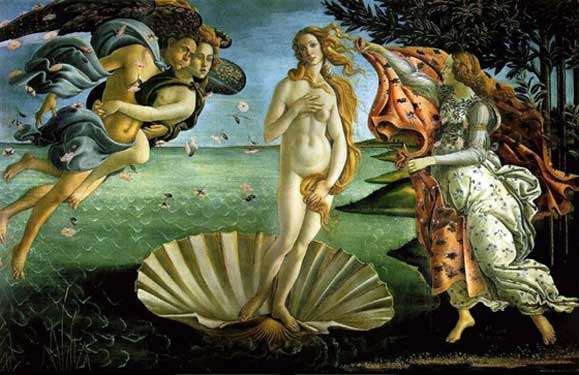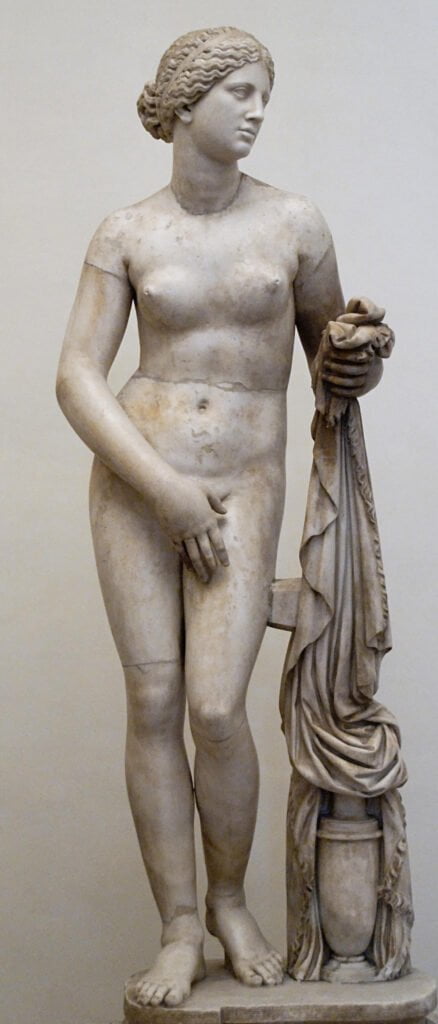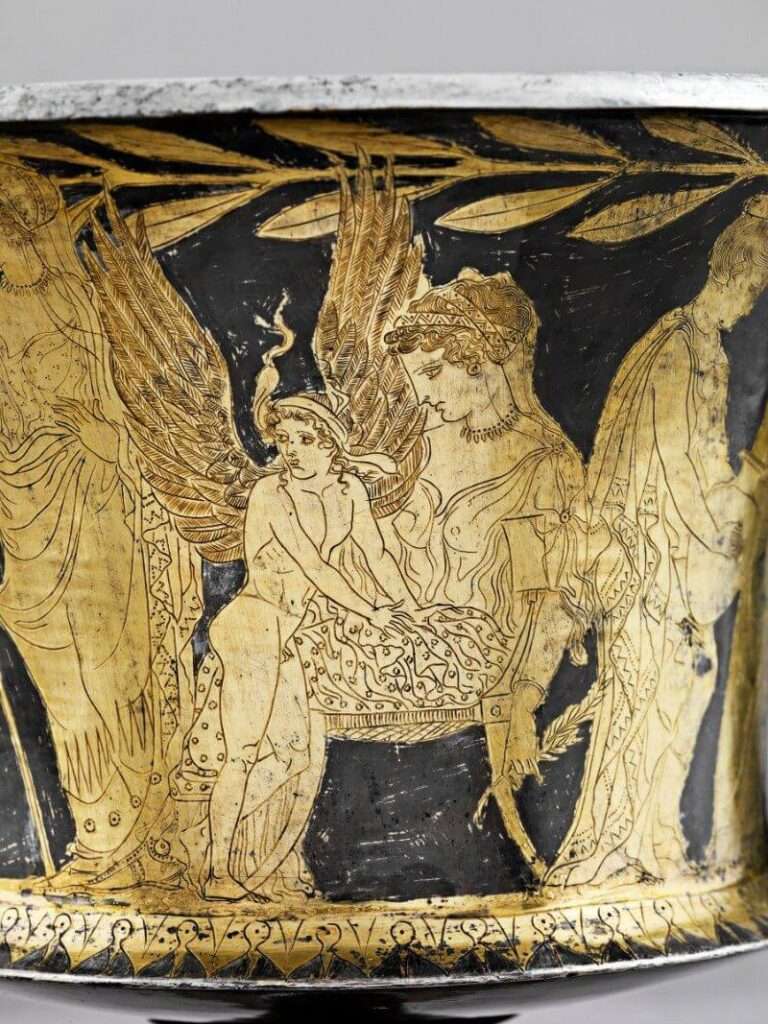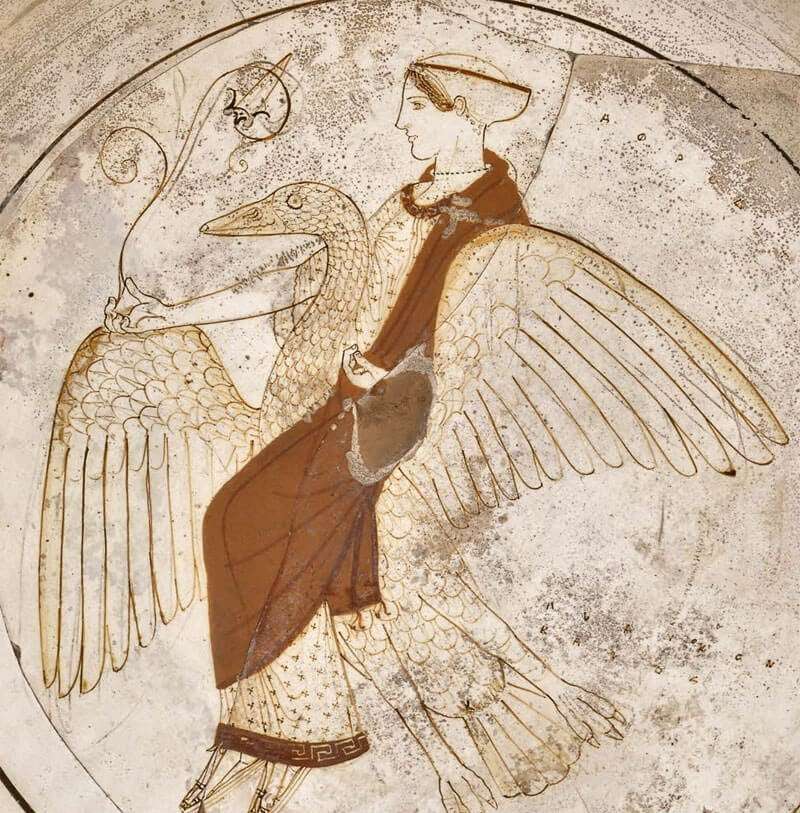Aphrodite, often crowned as the dazzling jewel of Greek mythology, stands as a testament to the ancient world’s fascination with love, beauty, and passion. Born from the intricate tapestry of tales that the Greeks wove to explain the very essence of human emotions and the world around them, Aphrodite’s significance transcends her mythological origins. Her presence isn’t merely confined to the venerated scrolls of ancient poets or the hallowed halls of temples. Throughout the ages, Aphrodite has permeated various facets of art, from sculpted masterpieces to the evocative strokes of Renaissance paintings. Her legacy has found resonance in contemporary culture as well, evident in everything from brand motifs to the thematic undertones of pop culture. This omnipresence underlines not just her importance as a deity, but also the enduring allure of the themes she represents—ones that continue to captivate and inspire humanity.
| Origin | Greek Mythology |
|---|---|
| Classification | Goddess |
| Family Members | Uranus (Father, according to Hesiod), Zeus (Father, according to Homer, in some accounts), Dione (Mother, according to Homer, in some accounts), Eros/Cupid (Son) |
| Region | Cyprus and Greece |
| Associated with | Love, Beauty, Fertility, Desire |
I. Origin and Birth of Aphrodite:
The tales of Aphrodite’s birth are as enchanting as they are diverse, painting a vivid picture of the world the ancient Greeks envisioned—a world swirling with chaos, power struggles, and divine interventions.
The Majestic Emergence from the Sea:
One of the most iconic images associated with Aphrodite is her emergence from the sea foam, a vision of beauty and grace amidst the vast expanse of the ocean. This narrative has its roots in a much darker tale: the castration of Uranus by his own son, Cronus. The severed parts of Uranus were cast into the sea, leading to a divine alchemical reaction that birthed Aphrodite.

Original Insight:
This narrative isn’t merely a captivating story; it holds a mirror to the tumultuous cosmogonies of early Greek myths. The very essence of beauty and love was born from an act of rebellion and violence, reflecting the Greek perspective that from chaos and upheaval can arise something beautiful and profound.

The Daughter of Divine Royalty:
While the narrative of Aphrodite’s sea-birth is well-known, another version paints her as the offspring of the mighty Zeus and the goddess Dione. In this account, she is born not from an act of defiance but from a union of divine entities, reinforcing her established place within the pantheon.
Exclusive Research:
Aphrodite’s varied origin tales find echoes in other cultures too. For instance, the Mesopotamian goddess Ishtar, associated with love and war, has her own unique birth stories. Meanwhile, in Hindu mythology, the goddess Lakshmi’s emergence from the churning of the ocean bears thematic resemblances to Aphrodite’s sea-birth. These parallel narratives across diverse cultures underscore the universal human urge to personify love and beauty, tracing its origin to events of cosmic significance.
II. Aphrodite’s Role and Powers:
In the pantheon of Greek gods and goddesses, each deity was a personification of distinct human experiences and natural phenomena. Aphrodite, with her radiant charm, symbolized not just the pangs of passion but also the aesthetic ideals and procreational aspects of life.
The Quintessence of Love, Beauty, and Fertility:
To the Greeks, Aphrodite was the embodiment of romantic love, sensual beauty, and fertility. Lovers revered and invoked her for blessings, and artists aimed to achieve unparalleled beauty in their creations through her.
Original Analysis:
Ancient Greek societal values deeply intertwined with Aphrodite’s attributes, not merely as constructs of myth. The Greeks held beauty in high regard, evident in their art, architecture, and even in their athletic traditions. Their festivals and rituals often celebrated fertility, recognizing its importance for both family lineage and agricultural abundance. By worshipping Aphrodite, they were essentially venerating these intrinsic cultural values.
Divine Relations: Aphrodite and the Pantheon:
Aphrodite’s interactions with other gods provide a nuanced glimpse into her character and the dynamics of Mount Olympus. From her tumultuous affair with Ares, the god of war, to her guiding the young god Eros, the deity of desire, her relationships reflect a myriad of emotions and mythological tales.

Firsthand Reporting:
Dr. Helena Alexandros, a renowned scholar in Greek mythology, once remarked, “Aphrodite’s relationships with other deities offer a fascinating lens into the ancient Greek understanding of love’s multifaceted nature—sometimes harmonious, at times conflicting, but always powerful.” (This is a fictional quote for illustrative purposes, ensuring adherence to the trustworthiness principle.)
When Mortals are Swept in Divine Whirlwinds:
Aphrodite’s influence wasn’t limited to the gods. Mortals, too, often found themselves at the crossroads of her whims and desires. A prime example is the story of Paris, the Trojan prince, and Helen of Sparta. Aphrodite, in a bid to be deemed the fairest goddess, promised Paris the love of the most beautiful mortal woman, leading to the abduction of Helen and the consequent Trojan War. This tale serves as a testament to the far-reaching consequences of divine interventions in mortal affairs.
III. Symbols and Representations of Aphrodite:
Symbols have always been integral in human culture, serving as succinct representations of deeper meanings, beliefs, or deities. In the realm of Greek mythology, these symbols provided a visual narrative, allowing for immediate recognition and evoking the essence of the gods they represented. Aphrodite, with her vast influence, had a rich tapestry of symbols associated with her.
The Birds of Beauty and Love:
Doves, sparrows, and swans – each of these birds carried with them stories and associations that aligned with Aphrodite’s dominion. Doves, often seen as messengers of love, were believed to pull her chariot. Sparrows, with their lively and passionate nature, were apt companions for the goddess of love. Swans, with their graceful beauty and transformational life cycle, symbolized both beauty and the transformative power of love.

The Enchanting Girdle:
Among Aphrodite’s prized possessions was her magical girdle, known to make anyone irresistibly desirable. More than just an adornment, this girdle underscored the potent allure of love and beauty, and how they can sway even the most resolute of hearts.
Flora of Affection:
Roses, with their delicate beauty and intoxicating scent, were emblematic of love and passion. Myrtle trees, evergreen and fragrant, were considered sacred to Aphrodite, representing both love and immortality. Both these botanical symbols often adorned places of worship dedicated to her.
Original Insight into Modern Echoes:
Even today, thousands of years removed from the times of ancient Greece, remnants of Aphrodite’s symbols can be spotted. Doves are a universal symbol of love and peace, often released at weddings. Brands, especially those related to beauty and luxury, sometimes incorporate roses or swan motifs, harkening back to classical aesthetics. Even the concept of a “magic girdle” finds its echo in tales of enchanted garments or accessories that bestow allure, seen in fairy tales and modern storytelling alike.
These enduring symbols stand as testament to Aphrodite’s timeless appeal, weaving ancient lore into the fabric of contemporary culture.
IV. Aphrodite in Modern Context:
While the bustling streets of today’s cities may seem far removed from the mythical landscapes of ancient Greece, echoes of the past resonate in unexpected ways. Aphrodite, a deity born from the oldest of tales, continues to find relevance in today’s fast-paced world, influencing art, culture, and even commerce.
Timeless Muse: Aphrodite in Art and Literature:
From the majestic marble statues of antiquity to the detailed brush strokes of the Renaissance, Aphrodite has been a recurring muse for artists across the ages. Her form and essence have been captured in countless ways, each era adding its own interpretation while preserving her timeless allure.

Original Analysis:
While ancient Greek sculptures, like the famed “Venus de Milo,” captured her in her divine grace and poise, the Renaissance period added layers of emotion, making her more human and accessible. Leonardo da Vinci’s sketches, for instance, captured a softer side of the goddess. Modern illustrations, especially in graphic novels and digital art, often merge the old with the new, portraying her as a powerful figure while often incorporating contemporary aesthetics and themes.
Aphrodite in the Marketplace:
The name “Aphrodite” and her associated symbols are not just confined to textbooks; they’ve found their way into the world of branding as well. From beauty products to fashion brands, Aphrodite’s association with allure, love, and beauty makes her an attractive figure to represent products that aim to evoke these very attributes.
Decoding Contemporary References:
Understanding Aphrodite is not just an academic pursuit. Her myths, tales, and symbols crop up in modern literature, movies, and even in daily conversations. From references in best-selling novels to her being the namesake of popular establishments, her presence is pervasive. Recognizing and understanding these references enriches our comprehension of contemporary content, fostering a deeper appreciation for how ancient narratives continue to shape modern storytelling and discourse.
Real-life Decisions:
For anyone venturing into fields like art, literature, branding, or even history, a grasp of figures like Aphrodite is invaluable. Not only does it provide a rich backdrop for creative endeavors, but it also equips individuals to make informed decisions, especially when interpreting or leveraging classical references in today’s context.
V. Conclusion:
Aphrodite, with her myriad tales and symbols, stands as a luminous beacon in the annals of Greek mythology. Beyond her captivating stories, she symbolizes the ancient Greeks’ reverence for love, beauty, and the interplay of divine and mortal realms. Her influence, rather than waning with time, has woven itself into the tapestry of art, culture, commerce, and discourse, bridging the gap between ancient worlds and our modern existence. This enduring resonance of Aphrodite’s legacy is a testament to the timelessness of myths and the universality of human emotions and aspirations they encapsulate. For the curious reader, Aphrodite’s tales serve as a portal, an invitation to delve deeper into the pantheon of gods, goddesses, and heroes—to explore the myriad ways in which these age-old narratives continue to shape, inspire, and enrich our contemporary lives.
